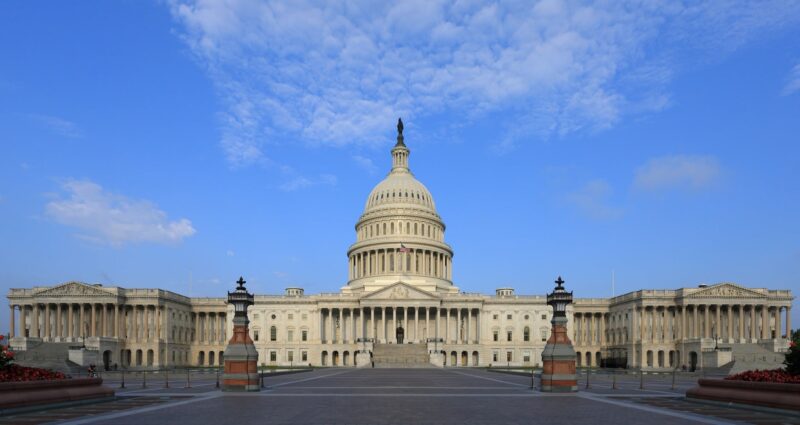
Senate Armed Services Committee Chairman James Inhofe (R-Okla.) on Thursday made good on his promise to sharply increase the budget for Department of Energy nuclear weapons programs at the expense of the Navy’s attack submarines.
The committee’s roughly $740-billion 2021 National Defense Authorization Act (NDAA) would authorize the National Nuclear Security Administration’s (NNSA) request for a $19.8-billion budget in the fiscal year that starts Oct. 1 — a 20% raise from this year’s $16.5-billion budget.
The committee approved the bill Wednesday.
The rollout follows Inhofe’s activism with President Donald Trump over the winter to give the NNSA a big boost. Then as now, Inhofe accepted the rationale behind NNSA Administrator Lisa Gordon-Hagerty’s 11th-hour plea in January for more funding: that a yearlong, internal NNSA study proved the DOE branch’s ongoing weapon refurbishments and infrastructure projects require much more than the roughly $17.3 billion that Secretary of Energy Dan Brouillette was willing to seek for 2021.
“The Department of Energy … came up about $2.5 billion short and we made an appeal to the President of the United States that it should be reinstated because it was a shortfall that did not treat our weapons capability the way it should,” the octogenarian Oklahoman, who is running for re-election, told reporters Thursday on a conference call.
A Senate Armed Services aide said on the call said the committee’s NDAA has all $1.4 billion the NNSA sought for expanding a plutonium pit plant at the Los Alamos National Laboratory and building a new one at the Savannah River Site in South Carolina. That is up about $570 million from 2020. The bill also authorizes $53 million for the NNSA to start work on the proposed W93 warhead, which would be the first new warhead design since the end of the Cold War.
As of Friday, only a 20-page summary of the NDAA had been released. The bill could come to the Senate floor as soon as next week, committee aides said, at which point the panel will release the legislative text, plus a detailed report revealing proposed funding for individual programs.
Armed Services Committee Ranking Member Jack Reed (D-R.I.) confirmed the NNSA’s increased authorization would mean the Navy will be authorized to build just one Virginia-class attack submarine in 2021, rather than the two it requested. However, Reed said, the service will get around $400 million worth of long-lead procurement money toward the second boat, up from $250 million requested.
That way, Reed said, “they’re ready to go basically” on the next attack sub, “if not this year [2021], then in the first opportunity.” The second Virginia-class ship the Navy wanted to build in 2021 would be the 10th in the series.
Despite Inhofe’s enthusiasm for increasing the NNSA’s budget, some Senate Armed Services members chafed this year at an apparent communications breakdown between the agency and the Pentagon about the civilian agency’s 2021 budget, committee aides said.
According to the NDAA summary, the bill “[i]mproves [Pentagon] coordination, insight, and participation in the NNSA budget development process and improves transparency of the NNSA budget for Congress and the public.”
Committee aides declined to be more specific Thursday on the phone, but they did say the bill would require the NNSA to check in at various times with the Nuclear Weapons Council, a joint DOE-Pentagon body in charge of nuclear weapons procurement, while crafting future civilian nuclear-weapons budgets.
The House Armed Services Committee plans to mark up its version of the 2021 NDAA starting on June 22. The strategic forces subcommittee will tackle the nuclear-weapons portions of the bill on June 22, with the full committee markup scheduled for July 1. Unlike the Senate markup proceedings that ended this week, those sessions are scheduled to be open to the public.
The House committee has shown little appetite to authorize $20 billion for the NNSA, or to authorize only one Virginia-class attack submarine for the coming fiscal year. However, the House’s Democratic majority got rolled last year in conference negotiations with the GOP-controlled Senate, and the NNSA wound up with more funding that it requested.
Annual NDAAs set policy and spending limits for defense programs, including those at the National Nuclear Security Administration. Subsequent appropriations measures provide the actual funding, and authorization bills routinely approve more funding than spending bills actually make available.
Politico reported this week that the Senate Appropriations Committee will begin marking up fiscal 2021 bills the week of June 22, and that the House Appropriations Committee will begin its work the week of July 6.
Rep. Marcy Kaptur (D-Ohio), chair of the House Appropriations energy and water subcommittee, has flatly said the NNSA will not get a $20 billion budget from her panel.
Last year, Democrats were especially wary of expanding the NNSA’s plutonium pit complex to produce 80 fissile warhead cores per year by 2030. They’ll have that fight on their hands again this year.
The Senate committee’s NDAA, as requested, authorizes $835 million for Los Alamos pits in 2021, up nearly $530 million year over year. For Savannah River pits, the bill authorizes more than $440 million, or about $30 million above the 2020 budget. There is also an NNSA-wide pit account, covering programs and personnel at Lawrence Livermore National Laboratory, the Kansas City National Security Complex and the Nevada National Security Site, that the bill would authorize at $90 million for 2021: some $10 million higher than 2020.
The NNSA is expanding Los Alamos’ Plutonium Facility to cast 10 war-ready pits in 2024, 20 a year by 2025, and 30 annually by 2026 and afterward. The Savannah River Plutonium Processing Facility, to be built from the remains of the Mixed Oxide Fuel Fabrication Facility, would make the other 50 pits annually starting in 2030. The DOE branch says either plant could handle 80 pits a year alone, but the agency also admits it will be challenged to actually make 80 pits a year 10 years from now.